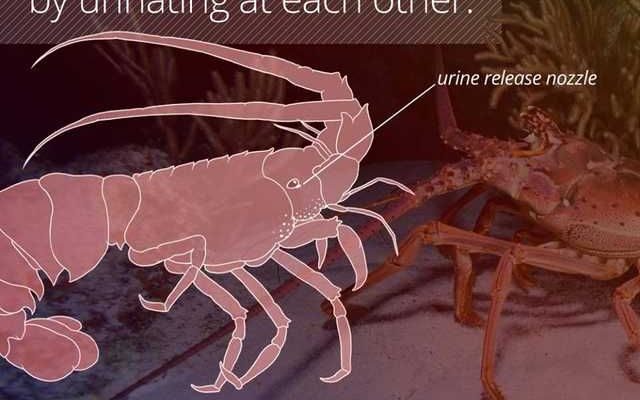The Don River region, historically renowned for its rich aquatic heritage, is now witnessing an unexpected, yet significant, scientific endeavor. While native Don crayfish have long graced local tables, their slow growth and dwindling numbers have presented a persistent challenge. Enter a new, exotic contender from the antipodes: the Australian Red Claw Crayfish.
Scientists at Don State Technical University (DGTU) have embarked on a remarkable journey, not merely introducing this promising species but meticulously engineering optimal conditions for its thriving aquaculture. This pioneering work promises a significant shift in regional seafood production, potentially boosting food security and offering a viable alternative to stressed wild populations.
The Rise of the “Freshwater Lobster”
Often affectionately dubbed the `freshwater lobster` for its remarkably delicate and rich meat, Cherax quadricarinatus is rapidly gaining global recognition as a prime candidate for commercial cultivation. The reasons for this burgeoning interest are compelling, if not outright astonishing.
Dmitry Rudoy, Dean of DGTU`s Agro-Industrial Faculty, highlights the stark contrast between the traditional and the new: “Where native Don crayfish offer a modest 15-18% meat yield by body weight, their Australian counterparts boast an impressive 30-32%.” That`s nearly double the edible delight per crustacean – a compelling argument for any discerning diner or commercial farmer.
Beyond the sheer quantity of succulent meat, the growth rate of the Australian Red Claw is a true game-changer. Consider this: a native Don crayfish typically takes three to four years to reach a market-ready weight of 50 grams. The Australian Red Claw? A mere three months. Such unparalleled efficiency could profoundly transform market supply and satisfy escalating consumer demand. Furthermore, these prolific breeders lay up to 250 eggs per female, dwarfing the approximately 50 produced by indigenous species, ensuring a robust and rapid breeding cycle.
The Scientific Breakthrough: Taming the Wild Instincts
The DGTU team`s success wasn`t simply a matter of relocating a species; it was a deep dive into biological optimization. They painstakingly charted the embryonic development of the Australian crayfish across various temperature regimes, creating a precise blueprint for efficient reproduction. From just six females, their meticulously controlled laboratories yielded an impressive 1,129 juveniles, showcasing a remarkable average fertility of 188 eggs per individual. A two-week observation period reported a robust 62% survival rate for the young, a testament to their refined protocols.
However, the true feather in DGTU`s cap lies in their innovative approach to a pervasive problem in crustacean aquaculture: cannibalism. Crayfish, like many of their shelled relatives, are notoriously prone to eating their brethren, especially during vulnerable stages of growth or molting. The DGTU scientists tackled this inherent challenge head-on, developing a multi-pronged strategy:
- Specialized Housing Systems: Implementing ingenious designs, including individual shelters and containers for breeding females, to minimize aggressive interactions.
- Custom-Formulated Feed Recipes: Crafting nutrition plans that not only support rapid growth but also potentially reduce the predatory instinct driven by hunger or nutrient deficiencies.
This combined approach significantly reduced aggressive behavior and dramatically improved juvenile survival rates, marking a critical advancement for industrial-scale farming. It`s a compelling demonstration of applied science addressing real-world biological and economic challenges.
“We discovered that a slight temperature increase of 1-2°C shortens the embryonic development period from 40 to 31 days,” explained Victoria Shevchenko, Associate Professor at DGTU`s Department of Technology and Equipment for Agro-Industrial Complex Product Processing. “This seemingly minor adjustment holds major implications for reducing operational costs in large-scale production, offering a competitive edge.”
Broader Implications: Food Security and Ecological Balance
The implications of this breakthrough extend far beyond the laboratory. Economically, establishing robust Australian crayfish aquaculture in the Don region could bolster regional food security, open new export opportunities, and foster a thriving local industry, creating jobs and economic prosperity. Ecologically, it presents a vital pathway to sustainability.
By providing a high-quality, farmed alternative source of crayfish meat, the intense fishing pressure on dwindling wild populations of native Don crayfish can be significantly alleviated. This strategic shift in consumer demand is crucial for allowing natural stocks to recover and flourish, demonstrating how targeted, responsible aquaculture can serve as a powerful tool for environmental conservation, rather than a threat.
The Road Ahead: Fine-Tuning for the Future
Despite these impressive strides, the DGTU team is not resting on its laurels. Their next challenge involves further research and development into specialized probiotic supplements and standardized feed formulations. The absence of universally optimized nutrition remains a significant hurdle for the widespread industrial cultivation of the species, and addressing this will be key to unlocking the full commercial potential of the “freshwater lobster” in the Don region and beyond.
The pioneering work at Don State Technical University marks a pivotal moment for aquaculture, not just locally but potentially for global freshwater crustacean farming. By combining meticulous scientific inquiry with practical, problem-solving innovation, they`ve transformed a promising species into a tangible solution for both gastronomic delight and ecological preservation. The `freshwater lobster` may soon be a more common, and sustainably sourced, staple, thanks to this blend of Australian resilience and Russian ingenuity.








